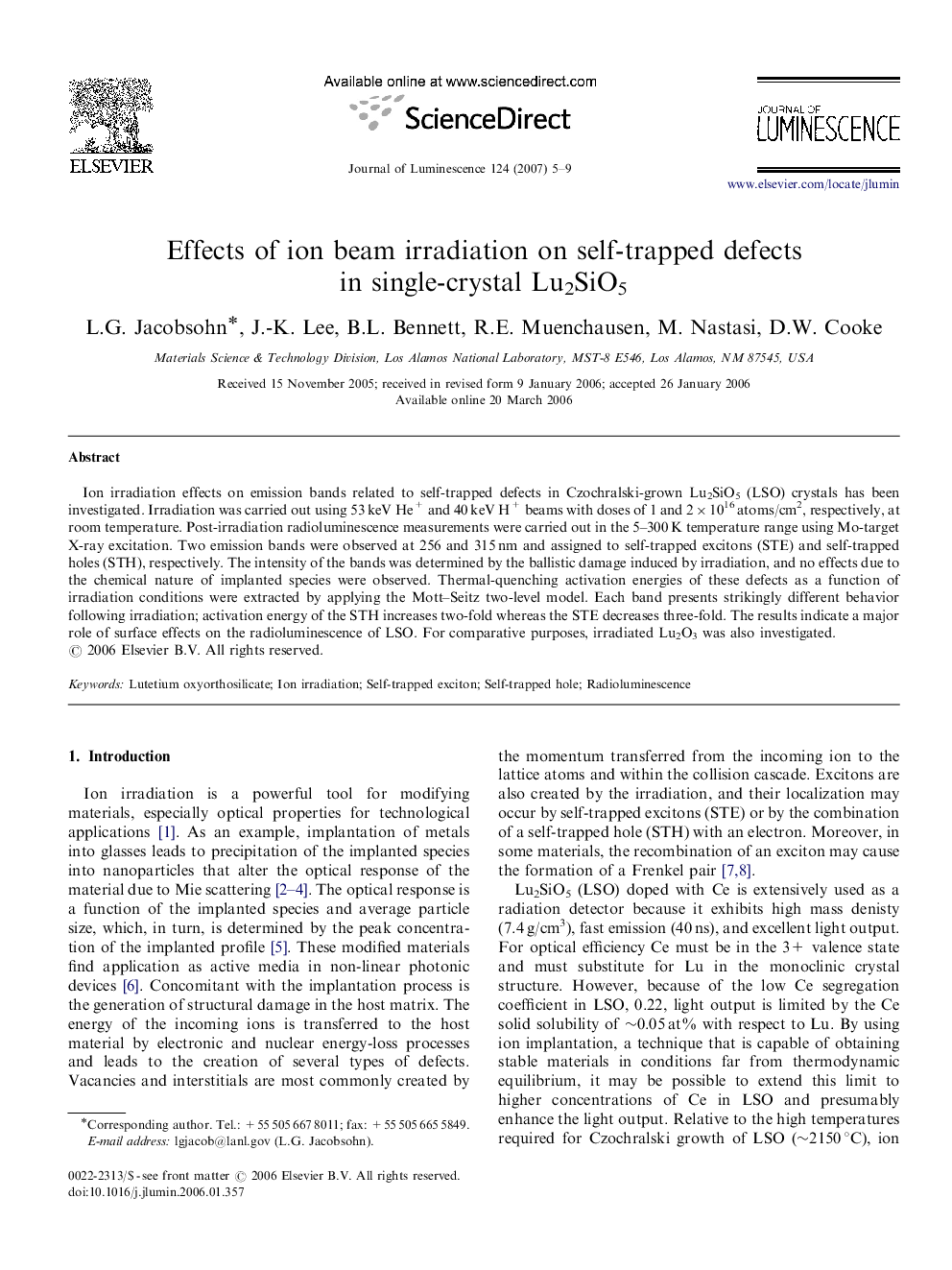| Article ID | Journal | Published Year | Pages | File Type |
|---|---|---|---|---|
| 5403632 | Journal of Luminescence | 2007 | 5 Pages |
Abstract
Ion irradiation effects on emission bands related to self-trapped defects in Czochralski-grown Lu2SiO5 (LSO) crystals has been investigated. Irradiation was carried out using 53Â keV He+ and 40Â keV H+ beams with doses of 1 and 2Ã1016Â atoms/cm2, respectively, at room temperature. Post-irradiation radioluminescence measurements were carried out in the 5-300Â K temperature range using Mo-target X-ray excitation. Two emission bands were observed at 256 and 315Â nm and assigned to self-trapped excitons (STE) and self-trapped holes (STH), respectively. The intensity of the bands was determined by the ballistic damage induced by irradiation, and no effects due to the chemical nature of implanted species were observed. Thermal-quenching activation energies of these defects as a function of irradiation conditions were extracted by applying the Mott-Seitz two-level model. Each band presents strikingly different behavior following irradiation; activation energy of the STH increases two-fold whereas the STE decreases three-fold. The results indicate a major role of surface effects on the radioluminescence of LSO. For comparative purposes, irradiated Lu2O3 was also investigated.
Keywords
Related Topics
Physical Sciences and Engineering
Chemistry
Physical and Theoretical Chemistry
Authors
L.G. Jacobsohn, J.-K. Lee, B.L. Bennett, R.E. Muenchausen, M. Nastasi, D.W. Cooke,
